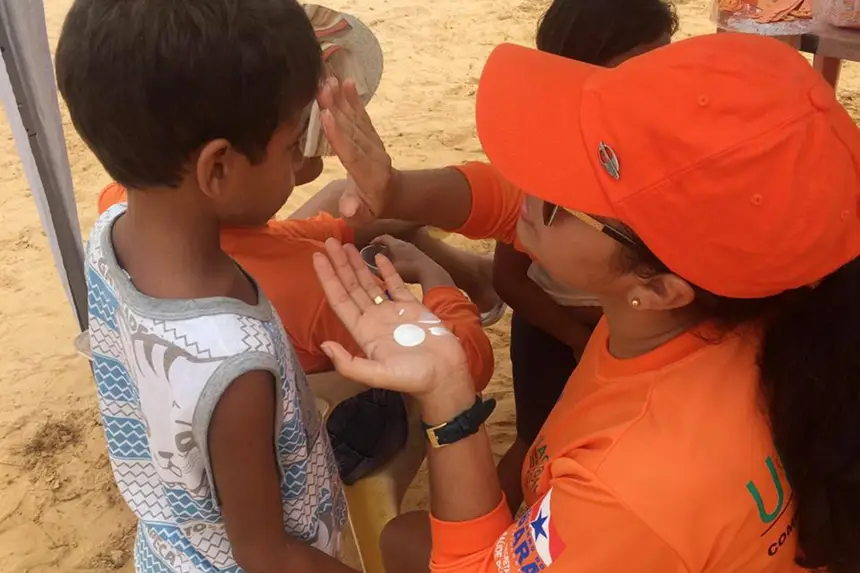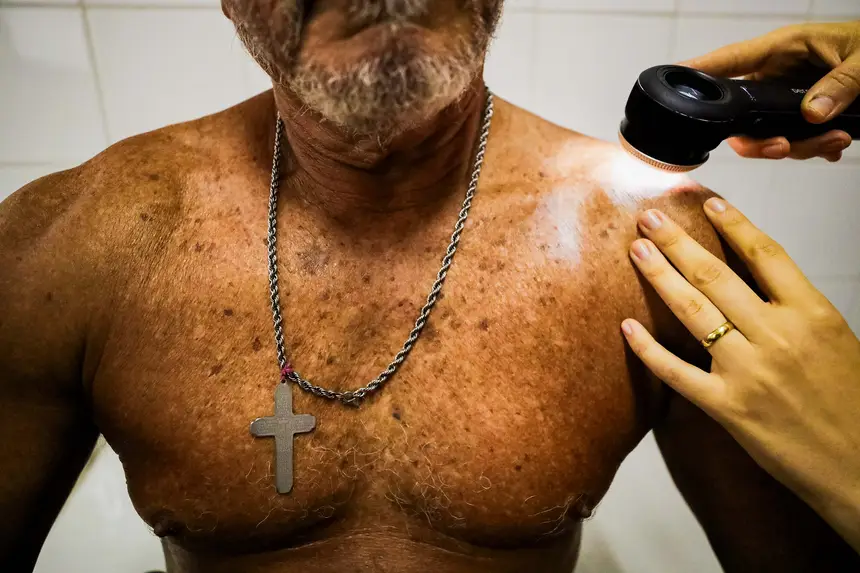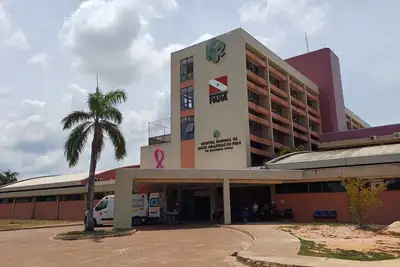Metropolitan Polyclinic warns about the risks of sun exposure and reinforces precautions to prevent cancers
In the country, skin cancer accounts for more than 1/3 of the diagnoses of this disease
With the decrease in rainfall and the increase in sunny periods in Pará, the Metropolitan Polyclinic in Belém intensifies alerts about the risks of dermatological diseases caused by exposure to ultraviolet radiation. In Brazil, skin cancer represents 33% of all oncological diagnoses, being one of the main diseases associated with excessive sun exposure.
Per month, the Metropolitan Polyclinic offers about 700 free consultations in the dermatology service. Appointments take place from Monday to Friday, from 8 am to 6 pm.
During this period of climatic transition, the unit's dermatologist, Yandra Sherring Einecke, emphasizes the importance of skin care during the Amazonian summer. According to the specialist, among the most serious diseases related to sun exposure is skin cancer.
“Skin cancer accounts for 33% of all cancer diagnoses in Brazil. The most common types are basal cell carcinoma and squamous cell carcinoma. However, the most aggressive is cutaneous melanoma,” she explained.
The first signs of skin cancer include elevated and shiny lesions, translucent or reddish, which may also present brown, pink, or multicolored tones, often with crusts and easy bleeding. Changes in existing moles should also be observed.
“A mole that changes color, texture, becomes irregular at the edges, or grows in size can be a warning sign. It is also important to pay attention to spots or wounds that do not heal, continue to grow, itch, form crusts, or bleed,” the doctor detailed.
Any suspicious lesion should be evaluated by a dermatologist, who will indicate the appropriate treatment according to the type of cancer, size, and prognosis.
In addition to cancer, unprotected sun exposure can worsen other dermatological conditions, such as:
- Actinic keratosis: pre-cancerous lesions that appear as small red, hardened, and rough wounds;
- Melasma: dark spots, usually on the face, that can intensify with the sun;
- Phytophotodermatitis: inflammatory reaction caused by the combination of photosensitizing substances (such as lemon juice) and sun exposure;
- Sunburns: ranging from redness to blisters and skin peeling.
Recommended care - To ensure skin health during the summer, the doctor recommends avoiding sun exposure between 10 am and 4 pm, the time of greatest UV ray incidence.
“It is essential to wear clothing and accessories such as hats, sunglasses, and long-sleeved shirts, preferably with UV protection or made of cotton,” she advised.
The daily use of sunscreen is also indispensable. It should be applied 30 minutes before sun exposure and reapplied every two hours or after excessive sweating or contact with water.
“The sunscreen should be evenly distributed over the entire body, including areas that are often forgotten, such as ears, neck, feet, and hands. Additionally, it is important not to apply it on wet skin,” Yandra reinforced.
In children, the use of the product is recommended from six months of age, preferably with physical filters suitable for sensitive skin.
Another essential care during this time of year is to keep the body hydrated. “It is necessary to increase fluid intake, prioritizing water, natural juices, and coconut water. Additionally, the daily use of moisturizers helps keep the skin healthy and protected,” the dermatologist concluded.
Care - The Metropolitan Polyclinic offers services for inflammatory skin diseases, infectious-contagious diseases, and biopsies to diagnose skin cancer. Dermatoscopy, histopathological skin examinations, and immunohistochemistry are performed.
Text by Roberta Paraense












